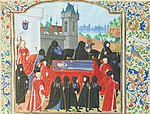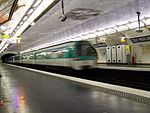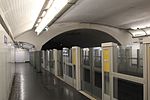Musée de la Magie
The Musée de la Magie, also known as the Musée de la Curiosité et de la Magie and the Académie de la Magie, is a private museum located in the 4th arrondissement at 11, rue saint Paul, Paris, France. It is open several afternoons per week; an admission fee is charged. The museum occupies 16th-century cellars beneath the Marquis de Sade's house, and includes items relating to magic shows, including optical illusions, secret boxes, wind-up toys, magic mirrors, see-through glasses, posters, etc. It also provides magic shows. The museum is collocated with the Musée des Automates, which contains more than 100 historical and contemporary automata. "The Museum of Magic is at 11 Rue Saint Paul in the 4th arrondissement. Nearest metro: St. Paul or Sully Morland."
Excerpt from the Wikipedia article Musée de la Magie (License: CC BY-SA 3.0, Authors).Musée de la Magie
Rue Saint-Paul, Paris 4th Arrondissement (Paris)
Geographical coordinates (GPS) Address Website External links Nearby Places Show on map
Geographical coordinates (GPS)
| Latitude | Longitude |
|---|---|
| N 48.853111111111 ° | E 2.3611666666667 ° |
Address
Musée de la Magie
Rue Saint-Paul
75004 Paris, 4th Arrondissement (Paris)
Ile-de-France, France
Open on Google Maps










